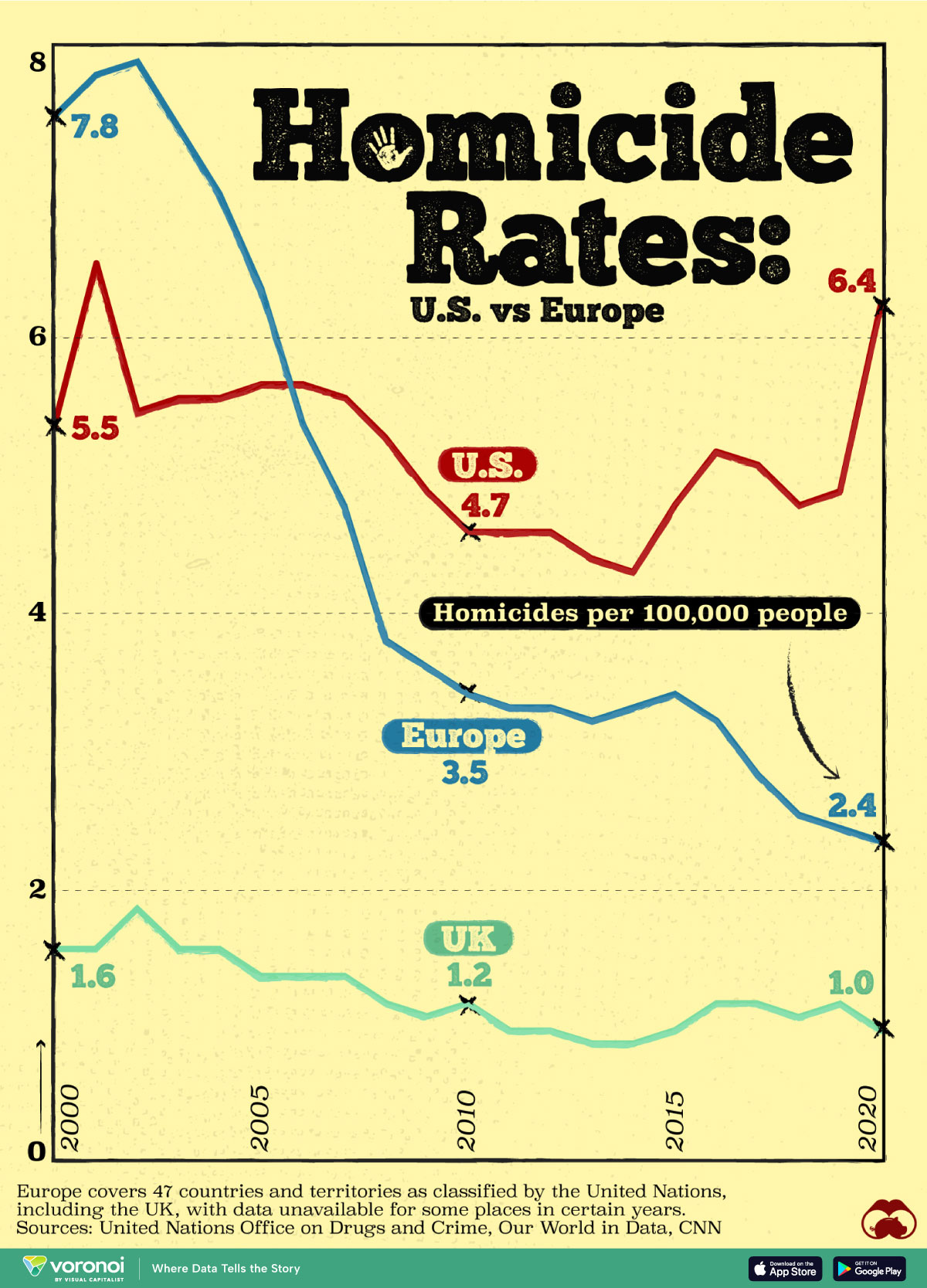Mid-Year 2025 Crime Trends: A Sustainable Development Goals (SDG) Perspective
Introduction
This report, the 15th in a series from the Council on Criminal Justice (CCJ), analyzes crime patterns through June 2025. The findings are assessed through the lens of the United Nations Sustainable Development Goals (SDGs), particularly SDG 16 (Peace, Justice and Strong Institutions), SDG 11 (Sustainable Cities and Communities), and SDG 5 (Gender Equality). The analysis reveals a complex landscape of progress and persistent challenges in achieving safer and more just societies.
Analysis of Offense Rates in Relation to SDG 16: Peace, Justice and Strong Institutions
Progress Towards Reducing Violence (SDG Target 16.1)
A primary objective of SDG 16 is to “significantly reduce all forms of violence and related death rates everywhere.” The data for the first half of 2025 indicates notable progress in this area, though challenges remain.
- Overall Reduction: Most offenses in the sample cities are below levels recorded in the first half of 2019, the pre-pandemic benchmark year.
- Homicide Decline: Homicide rates have fallen to 14% below those of the first six months of 2019. This represents a significant step toward reducing violent death rates.
- Recent Trends: Comparing the first half of 2025 to the same period in 2024, 11 of the 13 offenses studied showed a decrease.
- Persistent Elevation: Despite recent declines from the peaks of 2020 and 2021, over 60% of the sample cities continue to experience homicide levels above their pre-2020 rates, indicating that sustained effort is required.
Challenges in Achieving Gender Equality and Safety (SDG 5)
While most crime categories saw a decrease, the data highlights a critical area of concern that directly impacts SDG 5, which aims to “achieve gender equality and empower all women and girls,” including eliminating all forms of violence against them.
- Domestic Violence: This was the sole offense to show an increase in the first half of 2025 compared to the first half of 2024, representing a direct setback to SDG Target 5.2.
- Drug Offenses: Rates for drug offenses remained stable during the same period.
The Lethality of Violence and its Impact on Community Health (SDG 3)
Recent research reveals a concerning trend regarding the lethality of crime, which has direct implications for SDG 3 (Good Health and Well-being). While overall violence has decreased since the 1990s, the proportion of violent encounters that result in death has increased. This trend, coupled with the estimated 13,500 excess homicides between 2020 and 2024, underscores the immense societal costs, trauma, and impact on public health, which run counter to the goals of promoting well-being and reducing premature mortality.
Strengthening Institutions and Data for Sustainable Communities (SDG 11 & 16)
The Imperative for Improved Data Infrastructure (SDG Target 16.6)
Achieving SDG 16.6, which calls for “effective, accountable and transparent institutions,” and SDG 11, which aims for “safe, inclusive, resilient and sustainable” cities, is contingent on robust data. While the FBI’s transition to the National Incident-Based Reporting System (NIBRS) is an improvement, significant gaps in data collection misrepresent the true rate of victimization and hinder the development of effective policy.
The CCJ’s Crime Trends Working Group identified key gaps in criminal justice data, including:
- Non-fatal gun violence
- White-collar crime
- Environmental crime
- Cybercrimes
Furthermore, official law enforcement data inherently misses incidents not reported by victims. Continued investment in victimization surveys is essential for a complete picture of crime and its impact.
Recommendations for Policy and Partnerships (SDG 17)
The encouraging decline in most major offenses should not foster complacency. To build on this progress and align with SDG 17 (Partnerships for the Goals), a concerted effort is required.
- Sustained Action: Many communities continue to suffer from high rates of violence, necessitating the urgent implementation of evidence-based crime reduction strategies.
- Strategic Investment: Policymakers and philanthropic organizations should leverage this period of declining street crime to invest in research and data infrastructure.
- Future Preparedness: Closing data gaps and improving our understanding of all forms of crime will better prepare the nation to confront future trends and crises, ensuring continued progress toward the peaceful, just, and inclusive societies envisioned by the Sustainable Development Goals.
1. Relevant Sustainable Development Goals (SDGs)
The primary SDG addressed in the article is:
- SDG 16: Peace, Justice and Strong Institutions – This goal is central to the article’s discussion on crime rates, violence, homicide, and the need for effective crime control and robust data systems within the United States. The text focuses on promoting peaceful and inclusive societies by analyzing and proposing ways to reduce violence and strengthen the institutions responsible for justice and public safety.
2. Specific SDG Targets
Based on the article’s content, the following specific targets under SDG 16 can be identified:
-
Target 16.1: Significantly reduce all forms of violence and related death rates everywhere
Explanation: The article is fundamentally an analysis of violence and death rates. It extensively discusses trends in various offenses, with a significant focus on homicide. It explicitly states, “Homicide, the most serious of the crimes, has fallen to 14% below the rates of the first six months of 2019.” The text also covers trends in “non-fatal violent crime” and “domestic violence,” directly aligning with the target’s aim to reduce “all forms of violence.” The article’s core purpose is to track and understand these trends to inform efforts that “reduce victimization.”
-
Target 16.3: Promote the rule of law at the national and international levels and ensure equal access to justice for all
Explanation: The article connects to this target by highlighting the importance of understanding the “true rate of victimization” to ensure justice. It points out that official data “misses many incidents of victimization, mostly due to victims not reporting incidents to police.” By advocating for better data collection to get a “more complete picture of crime and those it harms,” the article implicitly supports the principle of ensuring access to justice for all victims, not just those whose cases are officially recorded. Crafting “effective crime control approaches” based on this data is a key component of promoting the rule of law.
-
Target 16.a: Strengthen relevant national institutions… to prevent violence and combat… crime
Explanation: The article directly addresses the need to strengthen national institutions by calling for improvements in crime data infrastructure. It praises the “FBI’s transition from its old, more limited summary system to NIBRS data” as a step forward but also notes that “crime data remain incomplete.” The recommendation to close “key gaps in criminal justice data, including information on non-fatal gun violence, white-collar crime, environmental crime, and cybercrimes” is a clear call to build the capacity of national institutions to better measure, understand, and ultimately combat crime effectively.
3. Mentioned or Implied Indicators
The article mentions or implies several indicators that can be used to measure progress towards the identified targets:
-
Indicator for Target 16.1: Homicide and violence rates
Explanation: The article provides explicit quantitative data on homicide rates, which directly corresponds to SDG Indicator 16.1.1 (Number of victims of intentional homicide per 100,000 population). It states, “homicide has fallen to 14% below the rates of the first six months of 2019” and notes that “more than 60% of the cities continue to experience homicide levels above pre-2020 rates.” It also tracks trends in “domestic violence” and “non-fatal violent crime,” which relate to indicators measuring other forms of violence.
-
Indicator for Target 16.3: Rate of victimization (reported and unreported)
Explanation: The article implies the importance of this indicator by criticizing the limitations of official data. It states, “By its very nature, law enforcement data misses many incidents of victimization, mostly due to victims not reporting incidents to police.” The call to “collect data on victimization from victims” suggests that a crucial measure of justice is the ability to capture the full scope of crime, which is often measured through victimization surveys (related to SDG Indicator 16.3.1).
-
Indicator for Target 16.a: Completeness and quality of national crime data systems
Explanation: The article implies that the strength of justice institutions can be measured by the quality of their data systems. It highlights the improvement with the move to “NIBRS data” which “provides detailed information about crime incidents.” Furthermore, it identifies specific “key gaps” in data on “non-fatal gun violence, white-collar crime, environmental crime, and cybercrimes.” The existence and comprehensiveness of such data systems serve as a tangible indicator of institutional capacity and strength.
4. Summary Table of SDGs, Targets, and Indicators
| SDGs | Targets | Indicators Identified in the Article |
|---|---|---|
| SDG 16: Peace, Justice and Strong Institutions | 16.1: Significantly reduce all forms of violence and related death rates everywhere. |
|
| SDG 16: Peace, Justice and Strong Institutions | 16.3: Promote the rule of law… and ensure equal access to justice for all. |
|
| SDG 16: Peace, Justice and Strong Institutions | 16.a: Strengthen relevant national institutions… to prevent violence and combat… crime. |
|
Source: counciloncj.org







